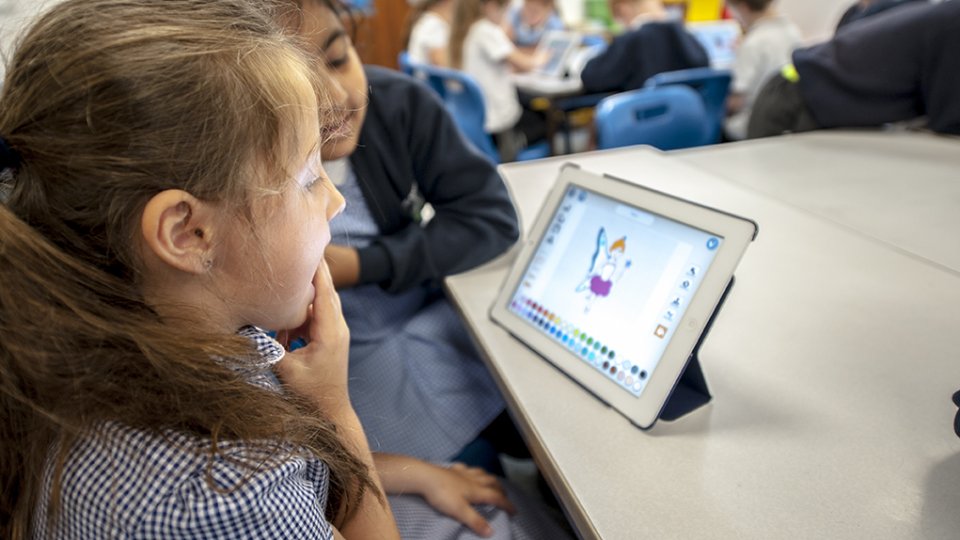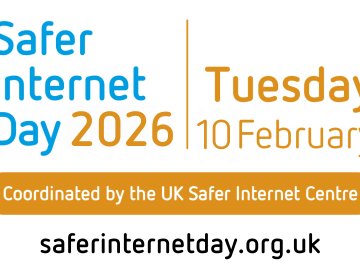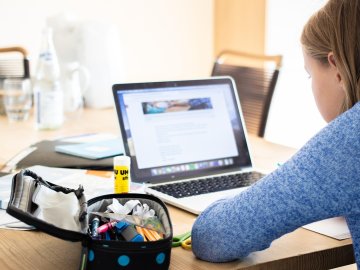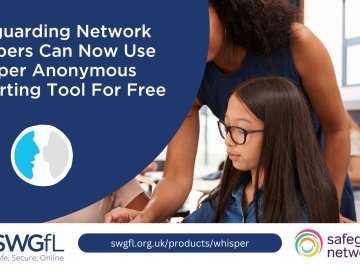Should young people be allowed to bring their own devices into school? On the face of it, this is a simple question; however, for many schools the answer has proved elusive. SWGfL’s recent annual assessment reports, which draw information from 14,000 schools, highlight that the management of mobile devices by schools is one of the least consistent aspects of their overall online safety provision.
The diversity of opinions includes:
“We can save money on technical investment!”
“Why should children ‘power down’ when they get to the school gate?”
“All of them have one anyway, why aren’t we using them?”
“What about those who don’t have them?”
“How can we control what they are using them for?”
“It’s hard competing with devices for a child’s attention.”
“I don’t want photos of me being taken whilst I teach!”
Some schools ban; some schools allow; and some have a hybrid policy, but what is the correct answer? Headlines in 2018 reported that “French schools ban mobile phones”, and whilst somewhat misleading as the regulations more accurately relate to “Pupils in France have been banned from using their mobile phones during school hours”, this very much had the effect of stimulating the debate within the UK. Whatever your view is on bring your own device (BYOD) we hope that this article will highlight some of the opportunities, challenges and considerations if your school is reviewing its approach to BYOD.
The Case for Allowing Personal Mobile Devices
Mobile devices have more computing power than NASA had when it helped put a man on the moon, and children should benefit from this potential and not be required to ‘power down’ at the school gate.
Is the easy option always the best?
Banning mobile phones in schools might be the easiest solution for combating many of the problems that they can facilitate, but is “easy” the adjective we want to settle with when we are talking about education, respect and the online safety of children? Is banning phones just an excuse for pushing the challenges of the online world outside of schools? Would we be delegating the responsibility to teach and educate children on the proper use of technology to somebody else? It is our responsibility as teachers, educators, parents and carers to prepare our children as best we can for the world that awaits them outside of the school gates.
There are well documented risks and threats associated with online technologies, which is why we should offer safe spaces where trusted adults can help young people to navigate these risks in order to best take advantage of the opportunities. With a digitally capable staff, schools should be positive digital role-models demonstrating and modelling safe and responsible use of smart devices to learn and educate.
Creating a supportive environment
The Online Safety of children should be a major consideration both in school and at home; however, parental support at home may fall short or be completely absent. This only emphasises the importance of a supportive school environment when it comes to tech use. This, of course, does not mean that children should be ‘left to their own devices’ at school, but afforded the same education, support and guidance they receive when using school equipment; schools cannot simply turn a blind eye. That said, parents should be an integral part of any BYOD policy, providing them with information, support and guidance on establishing suitable expectations of use.
Increasing pupil engagement
Saltash.net, a secondary academy in Cornwall, has developed a trusting partnership with their students, actively encouraging them to bring their own devices to school. This extends the amount of tech resources available in lessons and increases levels of pupil engagement.
“Give the students ownership, ensure they are involved in some sort of leadership and give them choice. Allowing students to choose to engage in learning is a vital element. History and RE Teacher, Katie Boothman, demonstrated how Microsoft Tags (similar to QR codes) are used to provide students with choice. These clever 2D barcodes connect the physical and digital worlds, linking students to alternative or extension materials. They are used on worksheets to provide additional sources of information, on display boards to link to student work that is stored online, in the library to showcase pupil feedback through book reviews, in school newsletters, to link to additional rich media content and throughout the school to share the school ethos with visitors linking to video content about school values and subject areas, in fact media features throughout the school.
“Deputy Head Teacher, Dan Buckley affirmed that the key to success is working out why you are using ‘mobile technology’ in the first place. Implementing ‘mobile tech’ without a clear context and a shared understanding of where it all fits in certainly won’t be successful, in fact, it’s a change management issue rather than a tech issue. Break it down into achievable steps rather than one enormous leap, staff should focus on identifying what is essential that all learners make progress in each year, establish what the core aims of the school are; then, and only then, start to work out where the technology can help” - Read more about Saltash.net.
Michael Trucano, World Bank's Senior Education & Technology Policy Specialist and Global Lead for Innovation in Education, highlights that
School is about helping students develop the knowledge, skills and attitudes that will be useful to them in life, does it make sense not to help students figure out how to use a device that will, for better or for worse, increasingly impact many aspects of their lives, in ways large and small, in ways that are ethical, safe, efficient and productive?
Technology's astonishing potential
We must not forget that some children with particular education needs, rely absolutely on their mobile devices to engage equally in their education. SWGfL recently delivered an online safety session to a class of around thirty children, all of whom were actively engaging with the questions and topics presented. With the desire to actively participate, one of the children, with cerebral palsy, was using their personal device to ask questions and give answers with the help of a teacher. It was a reminder of the astonishing potential of technology and, as this case demonstrates, a leveller enabling all to engage as equals.
Banning the future from entering the school gates will not prevent that future from coming in through the digital windows. Let's prepare the children for the future that is already here today.
The Case Against
Key issues when implementing an effective BYOD strategy include:
1. Complexity involved in effective management
2. High cost of setting up infrastructure and maintenance
3. Challenges related to cultural change
4. Large investment needed in staff development
Keeping pace
School investment in technology has not been consistent nor prioritised since the removal ten years ago of ring-fenced grants for connectivity infrastructure and devices. These centrally funded strategies, supported by nationally recognised bodies of expertise, created a level playing field of entitlement for every school; every learner; every member of staff; wherever they might be. The landscape has changed.
Whilst technology has moved on, schools have fought to keep pace and the technical maturity of many of them is at best disparate and often fails to meet the aspirations and expectations of their technology users, especially children and young people. This means provision at best is functional. Some of the more committed schools may provide devices for learners directly from the school budget or through assisted purchase, but this is not widespread nor consistent. And with BYOD, it fails to address the entitlement of those children who have low-quality or no access to technology
Purchasing decisions, which in the past may have been made by experienced leaders using grants specifically for IT, are now often devolved to bursars and business managers.
Schools need a clear technology vision to implement BYOD well; one that addresses the fundamental structures needed in place to make it effective. This is an area where so often pockets of BYOD practice fail to become the cultural norm as schools cannot commit within already tight budgets to a full blown strategy. At best it serves the enthusiastic few.
High costs and limited budgets
The management of personal mobile devices is complex and can be expensive within a larger teaching establishment. It requires a customisation of internal infrastructure to cope: mobile data management (MDM); access management; user identification; increased bandwidth; enhanced wireless capability. There are few other environments where several groups of thirty people all access web or media-rich resources all at once within the space of an hour. This requires significant bandwidth and network capability for it to be even useable.
The additional use across the school network needs to be monitored for misuse in the same way as other internal systems. This leaves huge gaps in monitoring capability should users decide to use their own mobile connectivity rather than signing to the school-provided network. A school is at risk of not meeting its statutory duty of care if, after encouraging BYOD, a section of the school community can bypass monitoring in this way. In these cases, policing this sort of activity is just as difficult, if not harder, that policing a ban.
With any technology strategy there are the real iceberg costs of support, intervention and staff development. Somebody needs to install, host, maintain and manage this additional layer of use. Staff development will need to include training on device usage, as well as pedagogical application and cultural change if the strategy is going to work effectively.
Demonstrating the benefits of BYOD
With reference to the advice given by the National Cyber Security Centre (NCSC) on BYOD, some recommendations are much easier than others to achieve. Policy and user agreements may be easily put in place, but policing and responding to them is much more difficult. The technical systems needed to achieve effective management involve additional cost and training. This requires that schools be secure in their strategy about highlighting the benefits of technology and demonstrating its positive impact on teaching and learning.
Demonstrating the benefits of BYOD, however, can be difficult, and sometimes contradicted by research. Children having unmanaged access to their smartphones have the potential to be a distraction, as highlighted by researchers Louis-Philippe and Beland Richard Murphy from the London School of Economics in their discussion paper Communication: Technology, Distraction & Student Performance. They concluded that following “a ban on phone use, student test scores improve by 6.41%”, going up to 14.23% for low achieving students. They found that the net effect of banning smartphones resulted in adding the equivalent of an extra week to the academic year.
The Children’s Commissioner for England, Anne Longfield, highlighted in her report, Life in Likes, some of the pressures felt by children aged eight to twelve when it comes to technology. Supporting this position, Amanda Spielman, Ofsted Chief Inspector, said in a speech at the Wellington Festival of Education in June 2018, “I am yet to be convinced of the educational benefits of all day access to ‘Snapchat’ and the like; and the place of mobile phones in the classroom seems to me dubious at best.”
Health and well-being
And here’s a final broader consideration; given the amount of time we spend at the behest of our personal devices during our lives, couldn’t school provide children and young people with the oasis of calm to step away from persuasive and pervasive technology in order to focus on physical socialising, dialogue, discussion and work? We know and understand the value of technology in meeting our aspirations and supporting our endeavours. But occasionally, is good to push for more balance? Even if it is enforced?
In summary
The arguments and justifications on both side are strong and clear. Our conclusion is that ‘if personal mobile devices are allowed, schools should manage them’ – a simple ban of mobile devices is not practical, nor is unfettered access. Mobiles are often required for safety purposes (travel arrangements etc.) and in some cases, required in connection with a disability. Whatever the policy of a school is, this should be clearly outlined and consistently applied across all learning, leisure and circulation spaces. All schools adopting a BYOD Policy should consult the excellent advice from the National Cyber Security Centre with a summary here.
Preparation
In preparing for managing a BYOD policy, 360 degree safe will help to assess the schools online safety provision. Launched in 2009 and used by over 14,500 UK schools, 360 degree safe is free to use. It prompts 28 different aspects of school organisational online safety provision, spanning policy, infrastructure, education and standards enabling schools to assess their own provision but more importantly, suggesting and charting improvements.
Integrated within 360 degree safe is an accreditation award; the Online Safety Mark. Currently around 450 schools across the UK have this coveted award which celebrates the importance and investment the school has made in safeguarding their children online. It makes an important statement for the school and its wider community.
Support
The Professionals Online Safety Helpline was established in 2011 to support professionals working with children and young people. The Helpline offers free and impartial online safety support and advice. The majority of safeguarding cases today are likely to have a digital dimension and the Helpline can assist in managing this component, allowing schools to manage safeguarding incidents more effectively.
Contact the Professionals Online Safety Helpline on 0344 381 4772. Lines are open Monday - Friday, 10am to 4pm. Calls cost the same as an 01 or 02, and are included in most inclusive minute plans.
Reporting
Over the last decade in particular, schools have developed robust safeguarding and child protection procedures. Increasingly, there is general confidence in the reporting of safeguarding incidents and clear that illegal issues are reported to the correct channels. What is perhaps more challenging is managing legal, but harmful, issues. On behalf of the UK Safer Internet Centre, SWGfL launched the national reporting hub Report Harmful Content.
Report Harmful Content has 2 main functions:
Advice: Empowering anyone who has come across harmful content online to report it by providing up to date information on community standards and direct links to the correct reporting facilities across multiple platforms.
Reporting: Providing further support to users over the age of 13 who have already submitted a report to industry and would like outcomes reviewed. Report Harmful Content will check submitted reports and industry responses against platform-specific reporting procedures and community standards in order to provide users with further advice on actions they can take.






